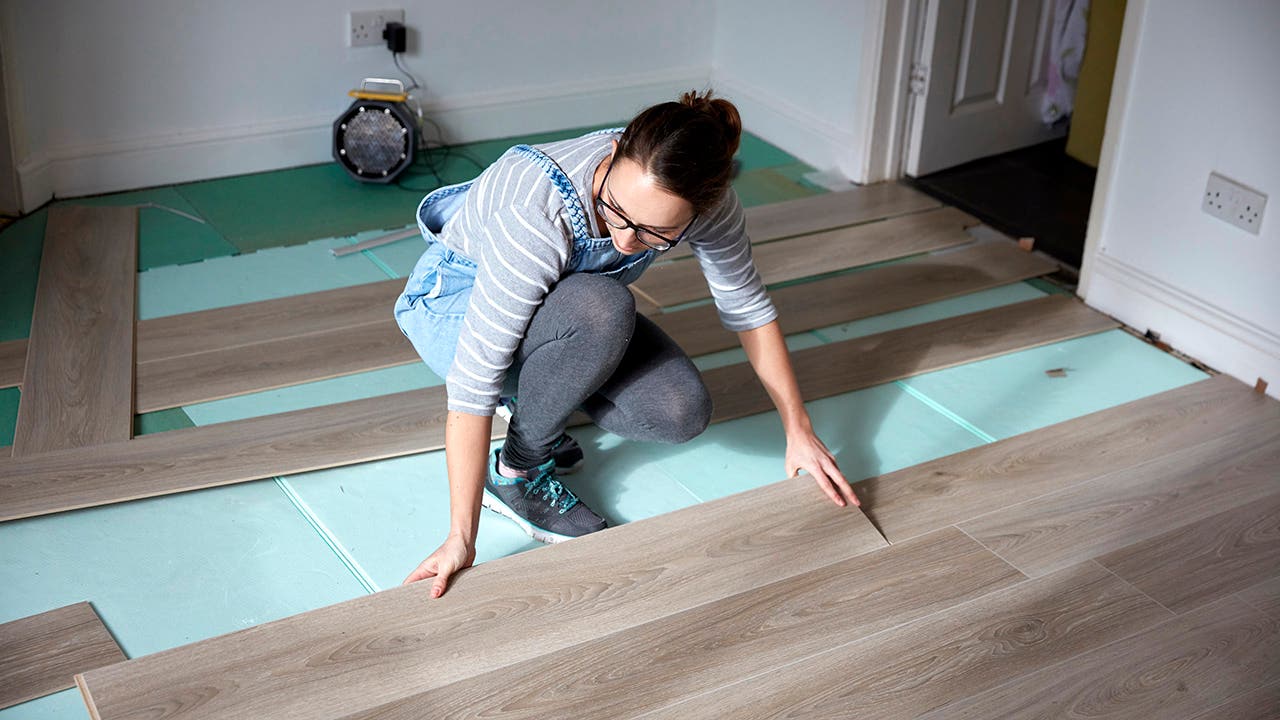How to use 0% APR credit cards for home renovations

The Bankrate promise
At Bankrate we strive to help you make smarter financial decisions. While we adhere to strict , this post may contain references to products from our partners. Here's an explanation for . The content on this page is accurate as of the posting date; however, some of the offers mentioned may have expired. Terms apply to the offers listed on this page. Any opinions, analyses, reviews or recommendations expressed in this article are those of the author’s alone, and have not been reviewed, approved or otherwise endorsed by any card issuer.
Key takeaways
- Using a credit card’s 0 percent introductory APR promotional period to finance home renovation costs can help you save money.
- If planned correctly, your card’s intro period can become an interest-free loan for supplies and services.
- Some credit cards are better than others for financing home renovations, including those with access to lucrative rewards.
Home renovations are a big business, and there’s no sign it’s slowing down soon. Whether you prefer DIY or hire every project out, the simple fact is that home renovations cost money. In fact, Americans spent an average of $13,667 across 11.1 home projects in 2023, according to recent research from Angi. Having the cash on-hand to pay for these projects isn’t always possible, which is why homeowners often turn to financing options so it’s easier on the budget.
One option a homeowner might consider is using a credit card with a generous 0 percent introductory APR promotional period for purchases. By budgeting responsibly and paying off what you borrow before the promo period ends, you just might be able to use your credit card as an interest-free loan.
Tips for using a 0% APR credit card for renovations
Using a 0 percent APR credit card and paying the balance in full before the promotional period ends can give you the option of stretching out payments over time, while avoiding costly interest charges. But using these cards for renovations comes with risks that include increased credit card use and a date-driven payment obligation in your budget.
Here’s how to avoid common pitfalls of using credit cards for large purchases like home renovations and home projects.
Maximize rewards for home improvement spending
Not only can a no-interest promo period help you extend out your renovation payments and possibly avoid interest charges, but the best 0 percent interest cards also allow you to maximize cash back rewards or points and earn large welcome bonus offers.
Look for a rewards card with a home improvement rewards category, like the Citi Custom Cash® Card or the Bank of America® Customized Cash Rewards credit card. If a card you’re interested in offers a lucrative sign-up bonus, you should be able to satisfy even a large spending requirement on supplies your renovation project requires.
You can use your cash back rewards to go straight to the bottom line, redeeming them for statement credits or direct deposit. And while they’re not often the best value for your rewards, you might also have the option to redeem rewards for gift cards to your favorite home improvement stores, which you can turn around and use on supplies.
Be strategic when using your credit card
A great time to use a credit card is when you’ve got a large purchase that can help you meet a welcome bonus spending requirement. If you can get a 0 percent introductory APR, even better. Finally, if you can rack up rewards on one or more purchases related to your home renovations, you could stand to gain a lot when you use your credit card at the right time.
That said, using a credit card is not always the best option for big renovation projects. If you are nearing the limit of one or more credit cards, the increase in your credit utilization ratio could adversely affect your credit score.
Using a credit card for labor also might not be the best idea if your contractor or supplier tacks on extra fees for accepting cards. In that case, you can ask your contractor for a list of materials or accompany them to the store so you can charge materials directly to your card of choice.
And while you may be tempted to get a cash advance on your card to cover your home construction project, think twice about the high rates and fees that come with one. Most card benefits don’t apply to your cash advance — for example, a 0 percent intro APR, welcome bonus or rewards). You’ll pay interest on a cash advance immediately at a higher APR — no grace period — and the higher APR and cash advance fees can make your purchase extremely expensive.
Be mindful of credit card fees
You may have situations where the fees are too costly to justify using your renovation credit card. More contractors accept credit card payments for labor costs these days, but you’ve got to be conscious of fees they may charge for using a card. Some smaller outfits may charge an additional fee to use a credit card.
Also, it’s vital you keep up with due dates for credit card payments. Not only can you face costly late payment fees, but a late or missed payment can result in a penalty APR and losing your 0 percent promotional period, making your home improvement credit card an expensive option if you’re stuck paying the highest APR.
Have a backup plan
If you depend on low or no-interest APR offers to finance a home improvement project, make sure you can pay off the balance before the promotional APR period ends. If not, you could end up carrying a balance with a high interest rate.
If you don’t have enough cash to pay off your balance, look into other ways to pay for your home improvements, such as taking on a personal loan or home equity loan. Just be sure to read the fine print so that you understand all fees you face.
4 best home improvement credit cards — and an alternative
Among the best cards for home improvements are those offering 0 percent APR promotional periods that can save you interest for 15 months or longer. Here are our four top favorites — and one alternative.
Citi Custom Cash® Card
-
- Rewards rate: 5 percent cash back (on up to $500 each billing cycle, then 1 percent) on your top spending category each billing cycle
- Welcome offer: 20,000 ThankYou points — worth $200 in cash back — after spending $1,500 in the first six months
- Annual fee: $0
- Purchase intro APR: 0 percent for 15 months
- Balance transfer intro APR: 0 percent for 15 months
- Regular APR: 19.24 percent to 29.24 percent variable ongoing APR
-
The Citi Custom Cash® Card is a solid card for renovators because home improvement is one of its eligible spending categories. And you won’t have to track or activate any bonus categories to earn top rewards. To maximize this card, use it to purchase all of your home improvement purchases to max out the $500 spending limit each billing cycle and earn the most cash back.
Bank of America® Customized Cash Rewards
-
- Rewards rate: 3 percent cash back on category purchases of choice, including gas (plus electric vehicle charging stations), online shopping (plus cable, streaming, internet and phone services), dining, travel, drugstore or home improvement; 2 percent cash back at grocery stores and wholesale clubs; 1 percent cash back on all other purchases (spending cap of up to $2,500 of combined 3 percent and 2 percent category purchases each quarter, then 1 percent)
- Welcome offer: $200 online cash rewards after spending $1,000 within the first 90 days of account opening
- Annual fee: $0
- Purchase intro APR: 0 percent for 15 billing cycles
- Balance transfer intro APR: 0 percent intro APR for 15 billing cycles for purchases, and for any balance transfers made in the first 60 days. After the Intro APR offer ends, a Variable APR that’s currently 19.24 percent to 29.24 percent will apply. A 3% Intro balance transfer fee will apply for the first 60 days your account is open. After the Intro balance transfer fee offer ends, the fee for future balance transfers is 4 percent.
- Regular APR: 19.24% to 29.24% variable
-
The Bank of America® Customized Cash Rewards credit card can help you maximize cash back earnings with your renovation spending with boosted rewards within a home improvement category, if it’s your category of choice. Although the card includes a spending cap of up to $2,500 (combined 3 percent and 2 percent category purchases) each quarter, you can earn the highest earning rate at both home improvement stores and online shopping for added shopping flexibility.
Chase Freedom Flex®
-
- Rewards rate: 5 percent cash back on activated bonus category purchases each quarter (on up to $1,500 in purchases, then 1 percent); 5 percent cash back on Chase Travel℠ purchases; 5 percent cash back on Lyft rides (through March 2025); 3 percent cash back on dining and drugstore purchases; 1 percent cash back on all other purchases
- Welcome offer: $200 cash bonus after spending $500 within your first three months
- Annual fee: $0
- Purchase intro APR: 0 percent for 15 months
- Balance transfer intro APR: 0 percent for 15 months (balance transfers must be made within the first 60 days and an intro balance transfer fee of 3 percent or minimum $5 applies)
- Regular APR: 20.49 percent to 29.24 percent (variable)
-
Although the Chase Freedom Flex®* may not seem like an obvious choice for a home improvement card, it’s mentioned here because its 5 percent rotating bonus categories often include stores like Amazon, Target and Walmart, all of which can be used to purchase home improvement supplies. Keep in mind Chase announces its bonus categories throughout the year, so this plan requires some flexibility and readiness to act.It also helps that this card comes with a welcome bonus and a 0 percent intro APR offer for 15 months, followed by a variable APR of 20.49 percent to 29.24 percent. These features, coupled with its rewards rates, could help you save significantly on any home improvement project.
Ink Business Cash® Credit Card
-
- Rewards rate: 5 percent cash back on the first $25,000 spent in combined purchases at office supply stores and on internet, cable and phone services each account anniversary year; 2 percent cash back on the first $25,000 spent in combined purchases at gas stations and restaurants each account anniversary year; 1 percent back on all other purchases
- Welcome offer: $750 bonus cash back when you spend $6,000 in the first three months
- Annual fee: $0
- Purchase intro APR: 0 percent for 12 months
- Balance transfer intro APR: N/A
- Regular APR: 18.49 percent to 24.49 percent (variable)
Upgrade Triple Cash Rewards Visa®
-
- Rewards rate: 3 percent cash back on home, auto and health purchases; 1 percent cash back on all other purchases
- Welcome offer: $200 bonus after opening a Rewards Checking account and making 3 debit card transactions within 60 days
- Annual fee: $0
- Purchase intro APR: N/A
- Balance transfer intro APR: N/A
- Regular APR: 14.99 percent to 29.99 percent fixed
-
Although it doesn’t offer a 0 percent introductory APR, the Upgrade Triple Cash Rewards Visa®* is worth mentioning for its 3 percent cash back in a wide number of home categories, such as hardware, home supplies, landscaping, HVAC systems and more. You could be approved for a credit limit as high as $25,000 and get the option to pay your balance in installments, too. This card might serve as a personal loan, particularly if you’re on the lower end of the APR range, which could be ideal for larger home improvement projects.
The bottom line
If you’re looking for a renovation credit card that can help you meet your home improvement goals, start with one offering a 0 percent introductory APR. If you can earn a welcome bonus and ongoing rewards — even better. With the right credit card, you could preserve your cash, avoid interest and beautify your home or investment property on a reasonable budget.
*Issuer-required disclosure statement
Information about Chase Freedom Flex® and Upgrade Triple Cash Rewards Visa® has been collected independently by Bankrate. Card details have not been reviewed or approved by the card issuer.
The information about the Bank of America cards was last updated on May 8, 2024
Related Articles



